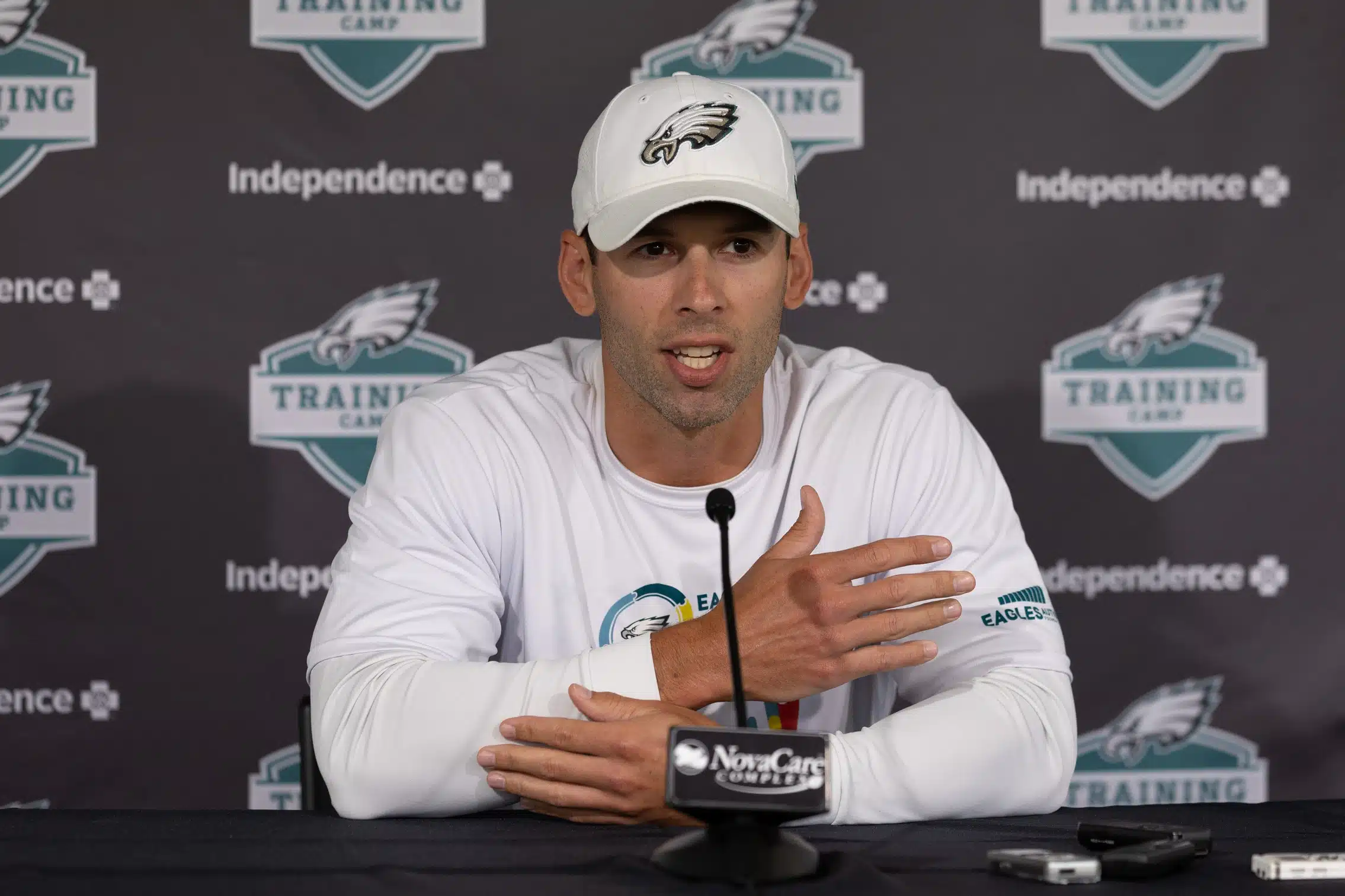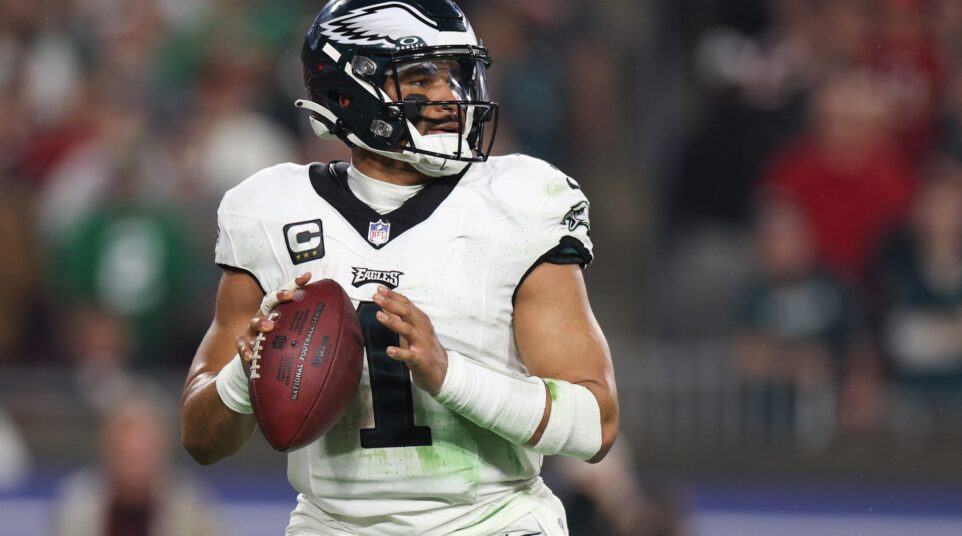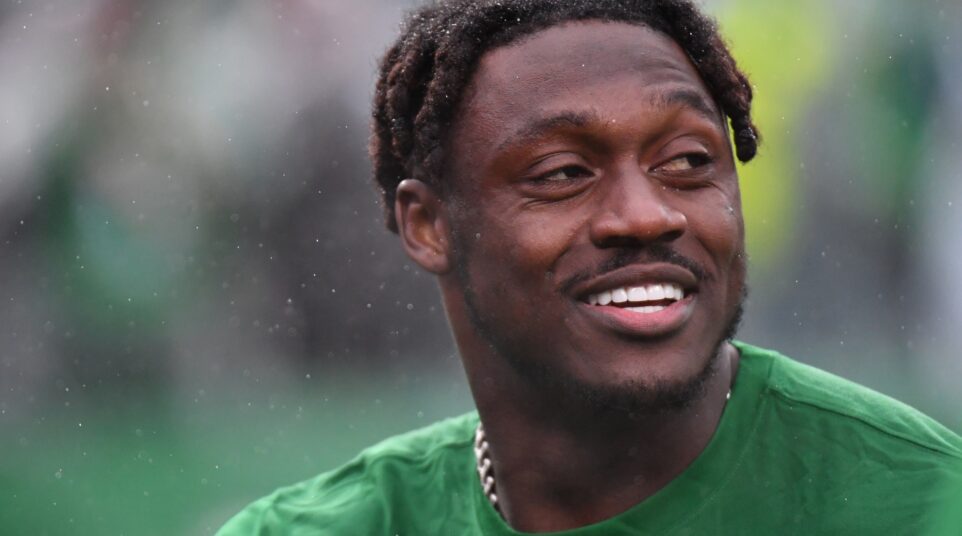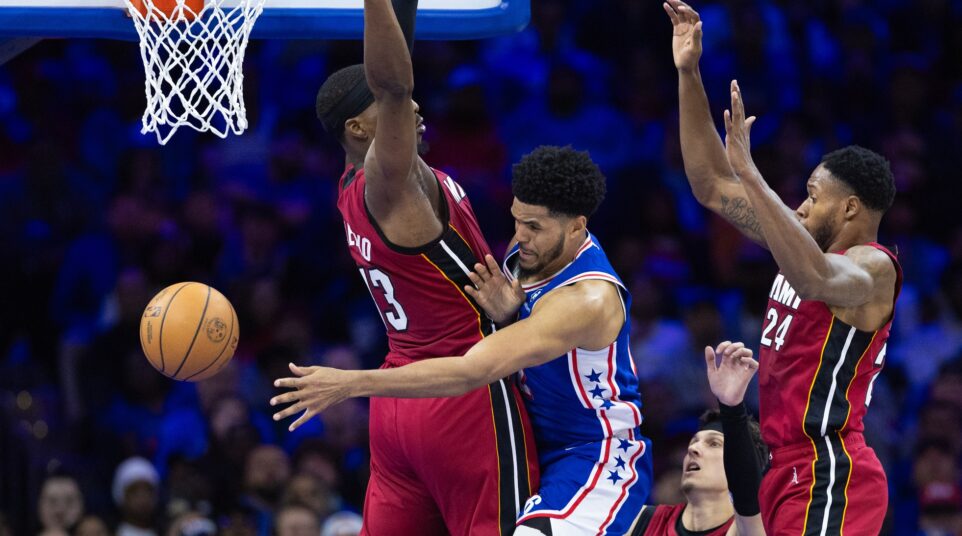
Jonathan Gannon's 2022 Defense Finishes Top 10 or Top 5 in Most Meaningful Statistical Categories
The regular season is over, which means we can go back and look through all of the data to see where the Eagles finished among their peers.
In short, it was a fantastic campaign all around. They finished 14-3 and ranked top five or top ten in most major statistical categories on both sides of the ball. Certainly there are plenty of caveats and footnotes worthy of highlighting, which we will, but in terms of raw numbers, let’s start with the Birds’ defense and break out the offensive ranks in a separate column.
Jonathan Gannon’s unit did the following in 2022 (with NFL ranks in parentheses) –
- 48 plays of 20+ yards allowed (2nd fewest)
- 3,375 burn yards (2nd fewest)
- 326 burns (9th fewest)
- 38.6% opponent third down conversion rate (14th overall)
- 21.9 blitz percentage (18th most in frequency)
- 43 hurries (tied for 12th)
- 43 QB knockdowns (tied for 21st)
- 67 missed tackles (tied for 14th fewest)
- 32 defensive penalties (6th fewest)
- 275 penalty yards (4th fewest)
- 24.8 defensive pressure percentage (1st in the league) –[this is a combination of knockdowns, hurries, and sacks]
- 121.6 rushing yards allowed per game (16th)
- 70 sacks (1st by a large margin, Kansas City was second with 55)
- 301.5 yards allowed per game (2nd fewest)
- 20.2 points allowed per game (tied 8th)
- 124 quarterback hits (2nd most)
- 10 strip sacks (1st)
- 97 tackles for loss (1st)
- 27 takeaways (tied 4th)
- 175 first half points allowed (10th fewest)
- 169 second half points allowed (12th fewest)
- 84 first quarter points allowed (5th most)
- 91 second quarter points allowed (5th fewest)
- 56 third quarter points allowed (5th fewest)
- 113 4th quarter points allowed (13th most)
All data from Sport Radar/Pro Football Focus.
Now to the caveats, asterisks, and footnotes. Probably the most important things to consider are 1) the quality of the quarterbacks they played and 2) clock control/time of possession. It’s true that the better quarterbacks were in the AFC this season, and as such, they did not face Patrick Mahomes, Josh Allen, Joe Burrow, or Justin Herbert. They did win against Aaron Rodgers and Kirk Cousins, beat Daniel Jones, Kyler Murray, and Jared Goff on the road, and more or less handled Trevor Lawrence and Ryan Tannehill at home. That’s not exactly murderer’s row, but it was similar to 2017 when the Super Bowl-winning Birds were fortunate enough to face stiffs like C.J. Beathard, Mitch Trubisky, and Brock Osweiler in consecutive weeks. The schedule worked out favorably then and now.
As for TOP, the opponent was on the field for 8:20:39 this season, which was 9th-lowest in the NFL and amounts to 1,107 defensive snaps, which is 12th-fewest. When you go through the numbers above, note that they achieved what they did in fewer total plays than 20 other NFL teams. Some of that was because they themselves got off the field via stops/takeaways, and other times because the offense was chewing up clock.
It’s also worth pointing out that the Eagles played nickel on 74.2% of their snaps this year, which was 5th-most in the NFL. More often than not, they had Avonte Maddox or a third/slot corner out there on the field. They played very little dime and essentially juggled their run-stopping Bear front with that nickel set. It’s a little tricky analyzing defensive personnel beyond this, because they played “multiple” fronts and would sometimes drop edge rushers into coverage, which is why you’ll see a lot of snaps logged as 3-3-5 at PFF and other sites, when that third “linebacker” was actually Haason Reddick or someone else.
But anyway, it was a phenomenal season for the Eagles defense, which was designed on preventing big plays. The biggest takeaway is that they disallowed those chunk gains while still getting to the quarterback despite blitzing at a middle-of-the-pack rate, so the way they created a defensive balance was probably the most impressive part of all of this. At times, it was incredibly frustrating to watch conservative zone/match coverage result in opposing offenses moving the chains and running the ball successfully, but the latter largely ended with the signings of Linval Joseph and Ndamukong Suh, plus the return of the injured Jordan Davis. As a result, they patched up the run defense while remaining strong on the back end, and did alright despite losing Chauncey Gardner-Johnson and Avonte Maddox for several games on the tail end of the schedule.
You don’t have to like Jonathan Gannon’s scheme or agree with the philosophy, but it largely did what it was designed to do in 2022. We’ll see how it holds up if the Eagles face Dak Prescott, Tom Brady, or another good QB in the playoffs.





